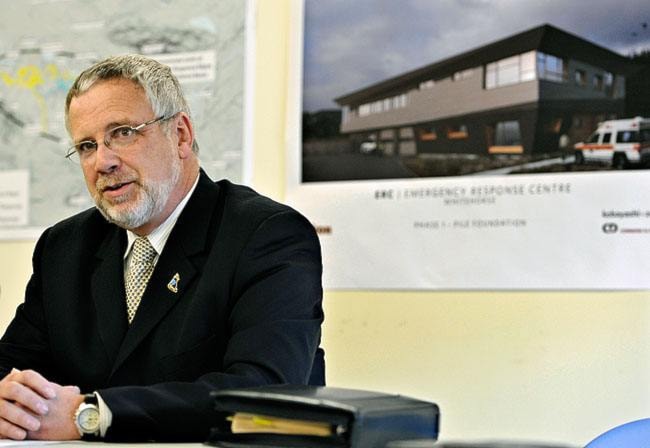Were it not for Drew Whittaker, the recently released Emergency Medical Services audit would likely still be under wraps.
The NDP researcher got the ball rolling with an access to information request.
He’d received a tip from a very reliable source in government that Emergency Medical Services was sitting on a damning audit.
So, Whittaker requested a draft copy of the audit.
Government had 30 days to respond to the request.
On the 30th day, Whittaker got his response.
The audit would be released within the next 90 days.
“There is a rule in the access to information act that allows government to hold onto information, if it will be released publicly in the next 90 days,” he said.
So Whittaker waited.
A month passed.
Then another.
Finally, exactly 90 days later, officials held a news conference, releasing the final draft of the audit report.
It delves into the services’ money troubles. “EMS faces challenges minimizing overtime costs,” according to the audit. And “further efforts are required to improve management’s ability to control expenditure.”
There also appears to be budget confusion.
“In many cases, expenditure line items identified in the budget remain the same year to year, even though actual expenditures were increasing, in some cases up to 400 per cent,” according to the audit.
And there are gaps in billing non-residents for service, which could have provided much-needed money, its says.
And money problems are just the start of it.
The audit also found there is a lack of control over ordering and collecting prescription drugs from local pharmacies, while in the communities rural volunteers do not have regular contact with dispatch “which increases the risk they will be unprepared for potentially unsafe environments,” says the audit.
“And some volunteers have been without a full set of protective clothing for months.”
Also, there is no formal process in place to make sure volunteers are ready for the job, including security clearance checks. This means “there is a risk that volunteers could attend incidents prior to appropriate approval and training.”
In addition, Yukon paramedics don’t have to undergo any recertification process. These critical skills “require continual education support,” says the audit.
“If these skills and techniques are not routinely reviewed and practised, there is an increased likelihood of skill decline and inconsistency in the delivery of care.”
On top of this, the actual dispatch system, used to receive 911 calls “has been subject to periodic failure ... this increases the risk that a call may be dropped,” according to the audit.
Also, there is only one dispatcher on shift at a time, which means if multiple calls come in at once, “a caller may have to be put on hold,” says the audit.
Emergency Medical Services considered a much-improved multi-million dollar dispatch option, to improve service, but “this was deemed too expensive,” according to the audit.
And because emergency services doesn’t track its critical system failures, “it’s difficult to determine if this level of expenditure is indeed too high ... or is consistent with risk.”
This audit was completed in March.
But it wasn’t released to the public until August, and then only after Whittaker made his access to information request.
Even after the request, the audit was held until the eleventh hour.
“We agree with all the (audit’s) recommendations,” said Emergency Medical Services director Michael McKeage, during the news conference.
Although damning, Whittaker’s source led him to believe this audit had undergone considerable editing before being released to the public.
“This may or may not be true,” said Whittaker.
But he hopes to find out.
Last week, Whittaker put in another access to information request asking for all drafts leading up to the final audit.
“My fear is that there has been some stuff omitted,” he said.
What is worrying, is that another Emergency Medical Services audit, completed in November, was never released to the public.
This health and safety audit, completed by Zral Safety Services, found Emergency Medical Services has a “limited number” of safe work practices in place and “most people have not seen them.”
There is also no formal system in place to remove defective tools and equipment, and there is no inspection policy, says the 66-page document.
There is also no policy in place for accident investigations, and “some near misses were verbally reported,” says the audit. “If there were recommendations for improvement, they were not made apparent.”
That’s not the end of it.
The services’ staff isn’t trained for emergencies and, at the community level, there are no safety reps, it says.
In addition, supervisors have not attended training in health and safety responsibilities and there are “few training records to indicate that staff has been keeping current or expanding its knowledge base,” it says.
This audit recommended medical services develop a follow-up plan to deal with its deficiencies.
Ten months later, the department was still working on this follow-up plan, according to a Community Services spokesperson.
Last week, the News requested a copy of this plan.
“We will have to see if we can give you a copy,” said acting director of communications Joanna Lilley.
Nothing materialized.
It’s the government’s responsibility to be open and accountable, said Whittaker.
“Emergency Medical Services has an important job to do, and we want to make sure it is functioning properly.”
Contact Genesee Keevil at
gkeevil@yukon-news.com
